The photo sums it up.
Death Ref John’s Congress for Curious Peoples presentation on the Abnormal, the Normal, and the Pathological on Display.
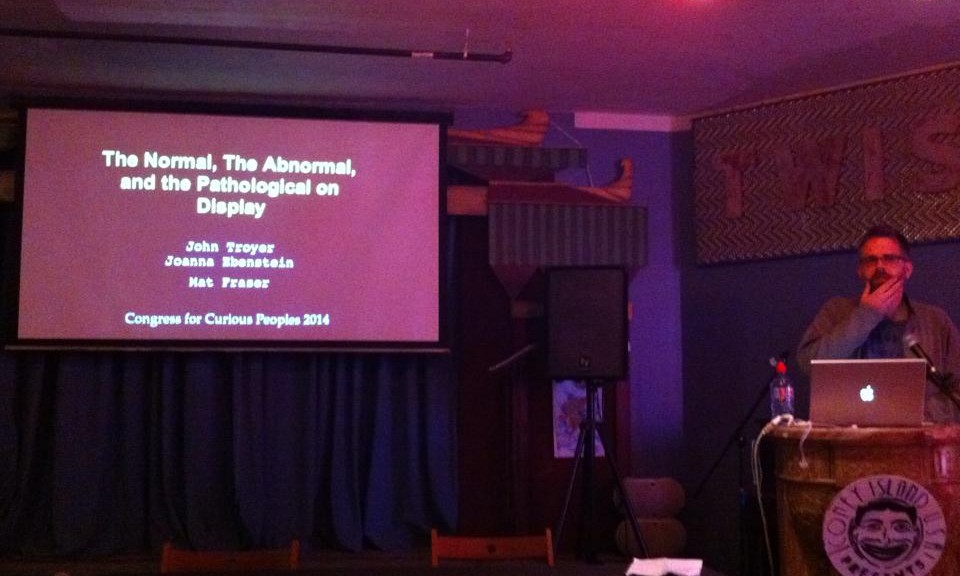
The photo sums it up.
Death Ref John’s Congress for Curious Peoples presentation on the Abnormal, the Normal, and the Pathological on Display.
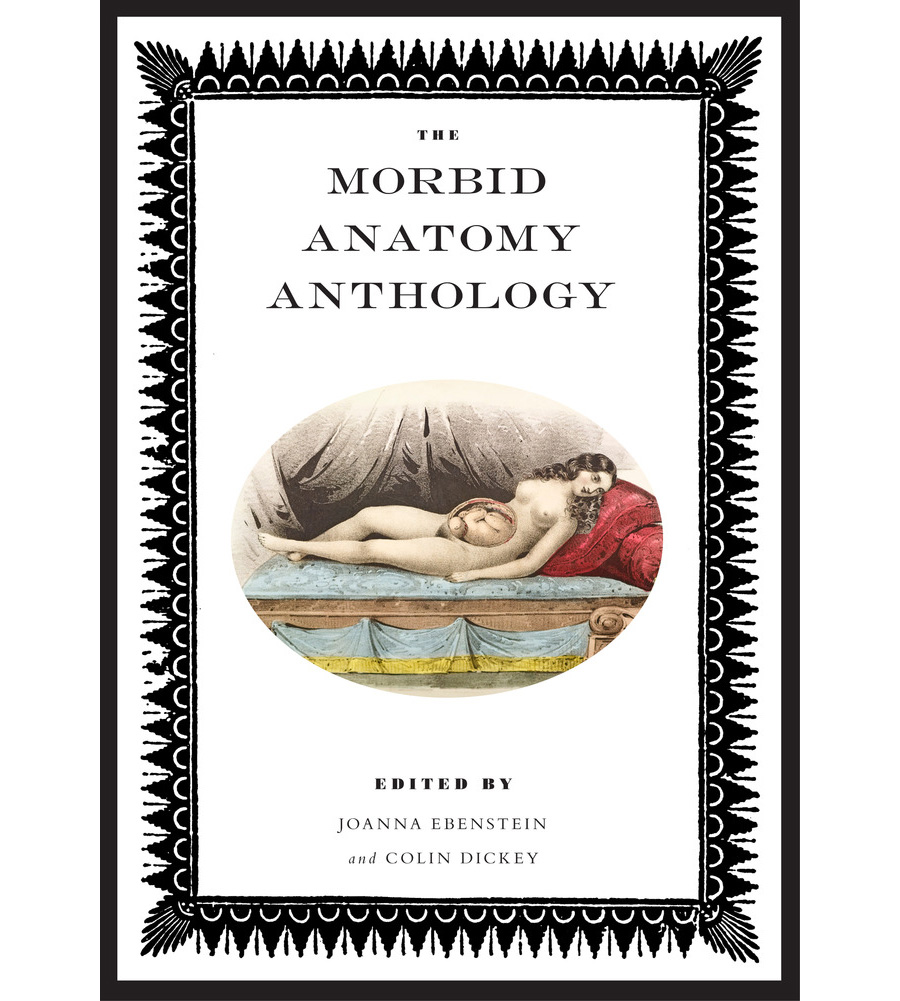
And lo, the Morbid Anatomy Anthology is now available for one and all to read. Death Ref John brings up the Anthology’s rear with an essay entitled On the Non-Denial Denial of Death.
More to come later this week on the 2014 Congress of Curious Peoples at the Coney Island Museum.
Yours in Death and Culture,
— The Death Reference Desk.
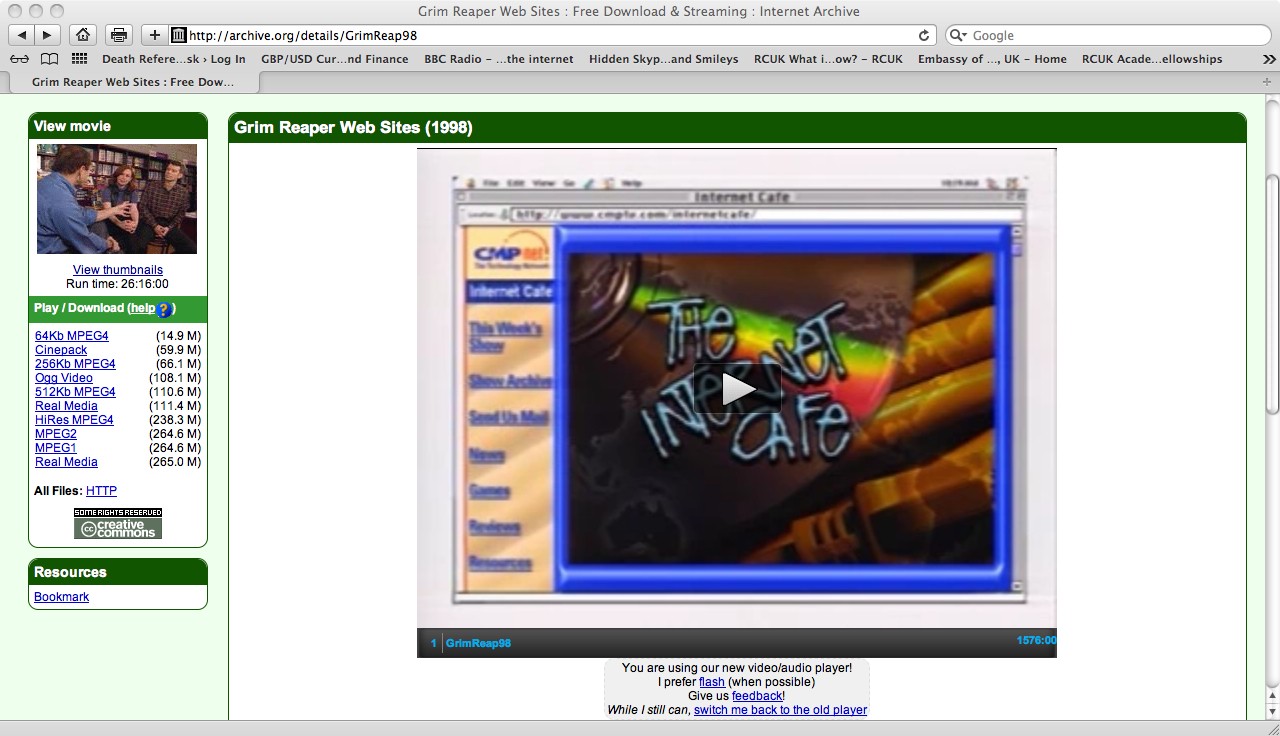
An Online Generation Redefines Mourning
Expressions of grief take on many public forms in the digital age.
By Hannah Seligson, New York Times (March 21, 2014)
It was inevitable, I suppose. At a certain point early 21st-century humans would begin doing things with computer technology that their long lost late 20th-century cousins did roughly twenty years earlier.
And lo, it has come to pass with death and the internet.
The New York Times has a Fashion & Style feature on how the kids are using the world wide web to discuss death, loss, the end-of-life, grieving, etc.
Three observations:
…Dramatic Pause…
We need to go back in time now, to a long-forgotten-about age when people still said Information Superhighway without irony or smirking. That’s right, we’re headed back to the mid-1990s.
As soon as the ‘web’ became a viable entity, largely because of the browsers Mosaic and then Netscape, individual users began creating websites about death.
It is also important to point out that everything happening in the late 20th-century also built on technology used during the 19th-century (e.g., telegraph communication, photography, rail transport, etc.) but I’ll stick with the 1990’s for now.
In 1996, a television show called the Internet Cafe began a run on American Public Television. The programme was later re-named the Net Cafe and it lasted until 2002. Think of it as the paleo-YouTube.
Two years into the Internet Cafe’s existence, on June 26, 1998 (historical aside: Bill Clinton wouldn’t be impeached until December 19, 1998 but most television footage was about the Starr Report), it aired a programme called Grim Reaper Web Sites.
As the title suggests, the entire show examines how people are using the world wide web to discuss a long list of death topics and issues. My particular favourite is the guy who creates a memorial website for Grateful Dead frontman Jerry Garcia.
The moral of our time-traveling tale is this: We humans began using the internet and web as soon as we could to discuss death. Why? Because that’s what we do with all communication technology. The technology will always change but death itself remains predictably guaranteed and discussed.
But don’t take my word for it, you can WATCH this episode of the Internet Cafe because of the always wonderful Internet Archive.
Here is a direct link to the Grim Reaper programme.
I also embedded the show at the bottom of the page.
The 1990’s live dude.
And if you’re interested in the history (both old and new) of death and technology then check out Death Ref’s Death + Technology page.
I’ll be giving a talk on these death technology issues (and other things) at the upcoming UK Death Salon.
One final point. In another twenty or thirty years I firmly believe that an intrepid reporter for the New York Times will write an article about whatever technology exists at that time (our computer overlords, most likely) and how the kids are using it to discuss death.
The rest will be silence.
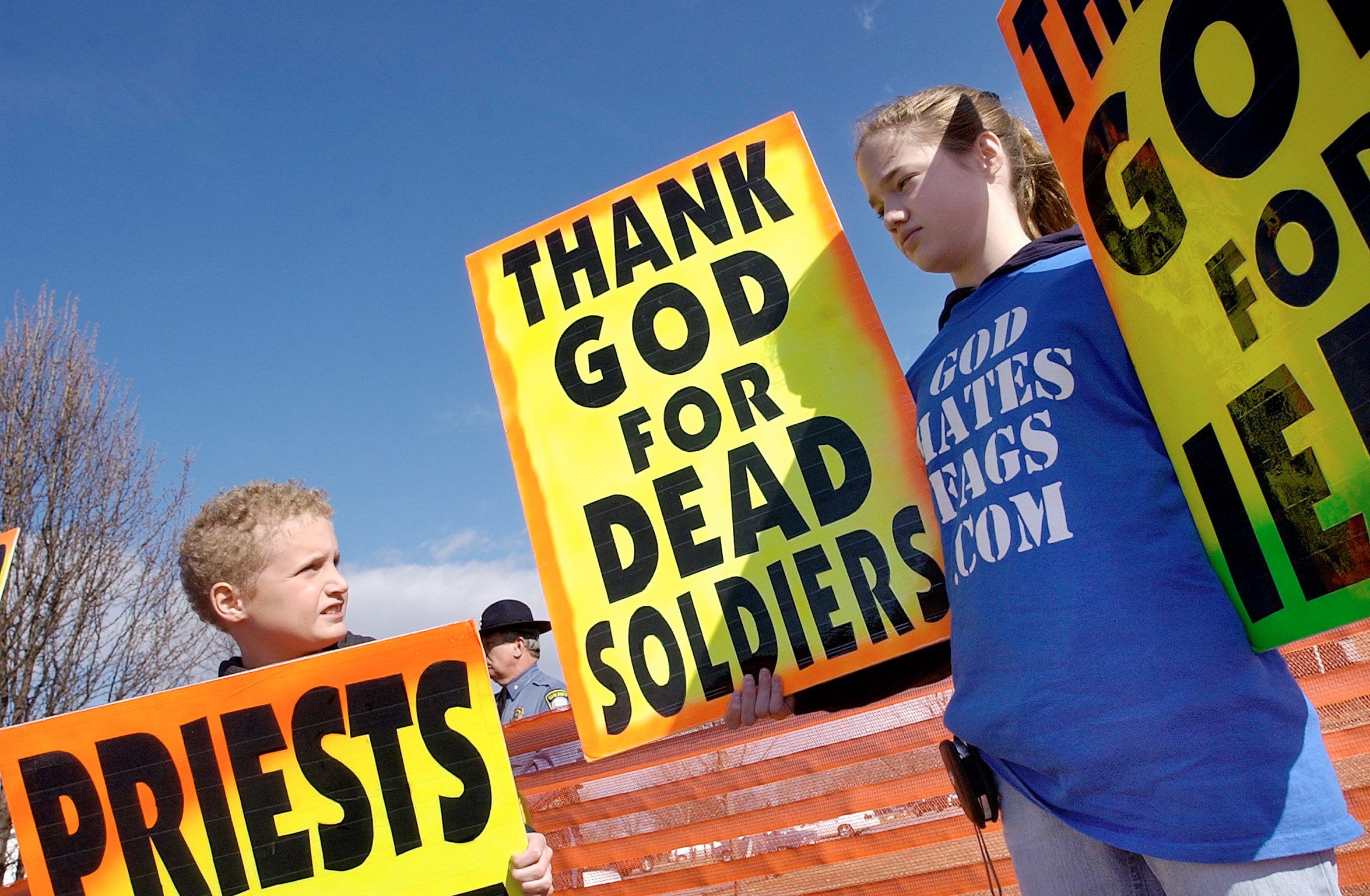
Westboro Baptist Church Founder Fred Phelps Dies Aged 84
Reverend started Kansas church that gained intense notoriety for its anti-gay protests and pickets at funerals of US soldiers
Jon Swaine, The Guardian (March 20, 2014)
Fred Phelps died earlier today. He led (until recently it seems, but the details are murky) the Westboro Baptist Church. The WBC gained international attention (and condemnation) for its protests at funerals for dead soldiers. It was also known for its ‘God Hates Fags’ signs.
We here at the Death Reference Desk began covering Phelps and the WBC in 2009. You can read all of those posts here.
Am I Going To Die This Year? A Mathematical Puzzle
Robert Krulwich, Radiolab (January 08, 2014)
Radiolab co-host, Robert Krulwich, posted a fascinating piece on a mathematical approach to determining when a person might die. Krulwich explains how he first picked up this topic:
A few years ago, physicist Brian Skinner asked himself: What are the odds I will die in the next year? He was 25. What got him wondering about this, I have no idea, but, hey, it’s something everybody asks. When I can’t wedge my dental floss between my two front teeth, I ask it, too. So Brian looked up the answer — there are tables for this kind of thing — and what he discovered is interesting. Very interesting. Even mysterious.
It turns out that a fascinating 8-year rule emerges for most human lifespans. I will let you read all about it.
Tick-Tock goes the clock.
And welcome to 2014.

Merry Christmas to all of our lovely Death Reference Desk Readers.
And remember to keep those Christmas Trees from spontaneously combusting.
Ho ho ho.

Gravity (2013)
IMBD (December 22, 2013)
Do not read this Death Ref post if you have not seen the film Gravity and would rather not read about the plot before seeing it.
You have been warned.
After much talking and planning, I finally saw the movie Gravity by Alfonso Cuarón. It stars Sandra Bullock and George Clooney.
Almost all of the reviews I’ve read or heard focused on Gravity’s use of 3D effects (which are very well done) and the somewhat existential-metaphysical-slightly New Agey-religious language used by Bullock’s character Ryan Stone.
What very few people seem to realise, I think, is that Gravity is a film about a dead child and parent grieving over the unexpected death of that child. In this case, it’s Bullock’s character and her daughter who accidentally died while playing tag at school.
It is also a film about living people talking to the dead and this is something that both secular and religious people do (whether they admit it or not) on a fairly regular basis. It’s completely normal and part of what is often referred to as a Continuing Bond after a person dies.
Case in point, near the end of the film George Clooney’s character Matt Kowalski suddenly reappears even though it’s clear that he must be dead. Bullock and Clooney have a conversation about how to get back to earth, which pulls Bullock’s character from choosing to die and instead motivates here to return home. The scene concludes with Clooney’s sudden disappearance and Bullock asking him to say hello to her dead daughter.
Sure sure, the world’s entire fleet of space stations and ships are ripped apart by space debris during the film and there’s a survival story involved but it’s just the spectacle that underscores the dead child narrative. I also get the sense that some of the perceived neo-Theological/New Age Christian critiques come from the scene where Bullock speaks to the dead Clooney about the dead daughter. Again, I didn’t see that as particularly religious rather it was a grieving parent asking a friend to check in on a beloved child.
The real genius of Gravity’s meditation on life and death is this: I firmly believe Bullock’s character Ryan Stone dies in the moments before speaking with the dead Matt Kowalski and that the film concludes with her entering a secular afterlife.
Of a kind.
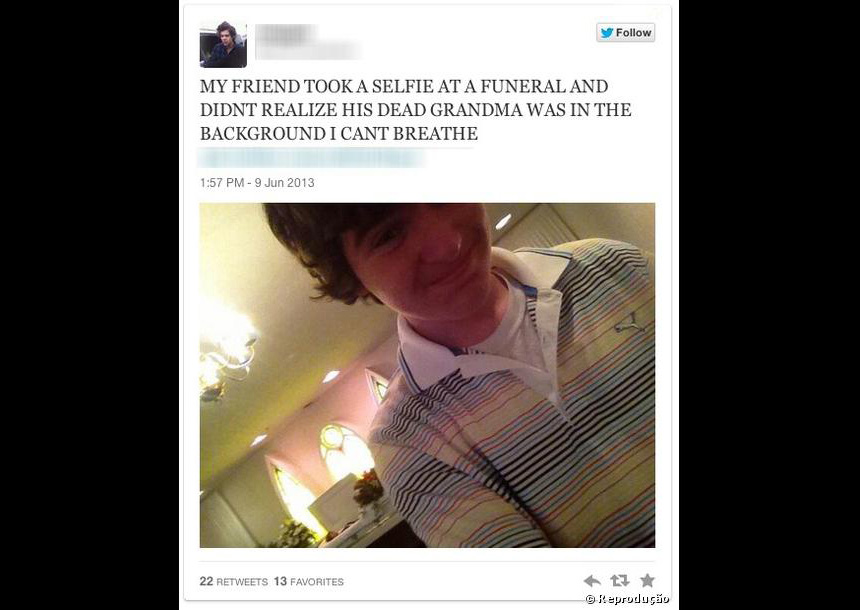
Selfies at Funerals
Jason Feifer, @HeyFeifer
RT If You’re 🙁 About Someone Dying
Katy Waldman, Slate (November 1, 2013)
A Passionate Defense of Selfies at Funerals
Caitlin Doughty, Jezebel (October 30, 2013)
When Cameras Took Pictures of Ghosts
Megan Garberoct, The Atlantic (October 30, 2013)When photography was new, people used it to suggest the endurance of the departed.
Dark tourism: Why Murder Sites and Disaster Zones are Proving Popular
Will Coldwell, The Guardian (October 31, 2013)
Selfies at Serious Places
Jason Feifer, @HeyFeifer
Charlie Brooker’s Black Mirror
Series 2, Episode 1 Be Right Back (February 2013)
The kids today. They can’t catch a break.
I watched the Selfies at Funerals Tumblr link roll across the internet this week and after seeing the images I immediately knew what was going to happen. People would complain about how the kids today were so self-absorbed that civilisation was near its collapse and how today’s youth don’t have any respect. I also knew that after this immediate condemnation, another group of voices would rise up to support the forsaken youth.
And this, Death Ref faithful, is exactly what happened.
The kids in the Selfies were damned left and right. It got a little thick at times.
But then, as should always be expected, another group of people took a more nuanced stand per the Selfies.
My good friend Caitlin Doughty at the Order of the Good Death wrote a strong defense of the kids on Jezebel and I mostly agree with her thoughts on the images. Where I disagree with Cailin is in arguing that these images represent a broader social disengagement with the reality of death. If anything, these photos show young people engaging with death, and doing so with a specific language that they’ve developed.
We humans invented all of our human death rituals. As a result, this means that all death rituals are constantly being changed, altered, and turned into hybrids. There is nothing innate about any ritual (given its human construction) so I think that it’s important to say that I would be more surprised if young people weren’t taking Selfies at funerals. This is the world they know but that doesn’t mean that today’s youth somehow lack any education about death.
Ironically enough, the Selfies at Funerals Tumblr page probably caused thousands more people to discuss actual death and funerals this week because of its supposedly disrespectful tone. Maybe, just maybe, the kids beat the adults at their own ‘We NEED to talk about death game.’
Katy Waldman at Slate took a wise step and waited a few days before writing anything. She presents a good critique of responses to the images but also brings everything back to the kids using the photographs as forms of grieving. I agree with this point and I kept waiting for someone to roll out a broader discussion about the relationship between photography and death.
Photography has a long standing relationship with funerals, especially in America. The camera phone is only the most recent example of a technology we humans use to capture images at funerals. Another way of looking at these photos is this– what else would anyone in the First World expect teenagers to do with their camera phones at funerals? Megan Garberoct at The Atlantic wrote an uncannily timed article on 19th century postmortem photography and the ability of Victorian era photographers to capture ‘Sprit’ images with their cameras.

But more than the photos themselves, it seems that the people criticising the kids just don’t like the technology involved, i.e., the camera phone that produced the self-taken image.
Here, then, is the key lesson for everyone loving to hate and hating to love the Selfies at Funerals: We humans remain deeply conflicted when mixing all forms of technology with death.
The great science fiction writer Douglas Adams (who died far too young) made the following observation about humans and technology in The Salmon of Doubt:
I’ve come up with a set of rules that describe our reactions to technologies:
1. Anything that is in the world when you’re born is normal and ordinary and is just a natural part of the way the world works.
2. Anything that’s invented between when you’re fifteen and thirty-five is new and exciting and revolutionary and you can probably get a career in it.
3. Anything invented after you’re thirty-five is against the natural order of things.
Given that my own research in the University of Bath’s Centre for Death and Society examines how technology and death intermingle all the time, I want to let everyone know that Selfies at Funerals represent only the beginning of a much longer future. We should already be asking ourselves what happens when a person wearing a computing machine, such as Google Glass, captures images and video at a funeral. Is a line being crossed there and why? How? I ask these questions, because it is going to happen and happen soon.
Just remember, and not so long ago, the idea of using the internet for anything to do with death seemed inappropriate. So did playing pre-recorded music on a CD (especially loud rock and roll music), having mourners draw or paint on a coffin, or even choosing to be to cremated.
What we humans forget is that death’s persistence means that we will persistently invent new kinds of death rituals. No ritual lives forever. Will Coldwell’s Guardian article on Dark Tourism highlights how easily the very idea of established and appropriate ‘death rituals’ can be changed.
Earlier this year, Charlie Brooker’s Black Mirror television series ran an episode called Be Right Back that effectively dramatised how the not-to-distant future might offer new kinds of technology for human grieving. Here is the show’s description:
Martha and Ash are a young couple who move to a remote cottage. The day after the move, Ash is killed, returning the hire van. At the funeral, Martha’s friend Sarah tells her about a new service that lets people stay in touch with the deceased. By using all his past online communications and social media profiles, a new ‘Ash’ can be created. Martha is disgusted by the concept but then in a confused and lonely state she decides to talk to ‘him’…
Trust me when I say that if the technology imagined in Black Mirror suddenly appeared, the Selfies at Funerals shock and outrage would quickly wash away into the sea of human memory.
So where does this week take us? It’s hard to say, because I have a feeling most people have already forgotten about the Selfies at Funerals and moved on to other more pressing issues.
But I do think that it is now time to officially launch a new Death Reference Desk rule about death and technology. To wit:
The Death Ref Technology Law: Any use of new technology that involves death, dying, and/or the dead body will be simultaneously rejected as a breakdown in human civility as well as embraced as an innovative turn for human grieving.
Or, as my friend Max summed up the situation on Facebook:
I was disgusted by this until I remembered I took a selfie at the last funeral I went to. Now I’m okay with it.
Death Salon LA 2013 Los Angeles, CA (October 18 and 19, 2013)
Our good friends at the Order of the Good Death are putting on an enormous Death Fest next week in Los Angeles. Check it out if you can! And here’s some Death Race 2000 just for fun.
https://www.youtube.com/watch?v=0ZLYEbkykCI
On the Death and Burial of Cock Robin
Guest Post by John Troyer, Centre for Death and Society, Bath University (August 23, 2013)
Death Ref’s good friend Joanna Ebenstein, who runs the Morbid Anatomy blog and benevolent empire in Brooklyn, NY, asked me if I would write a guest blog post for her new book on the 19th century British taxidermist Walter Potter. If you don’t know Walter Potter’s work, but like taxidermy, then you really must look him up. Joanna and Walter Potter expert Pat Morris have put together a new book called Walter Potter’s Curious World of Taxidermy.
Walter Potter is known (and a little infamous, in a late-Victorian kind of way) for his anthropomorphic taxidermy in which dead kittens (for example) have a tea party. There is significantly more to say about all of Potter’s taxidermy work, but I focused on a personal favourite The Death and Burial of Cock Robin.

Please check it out!

Living to 120 and Beyond: Americans’ Views on Aging, Medical Advances and Radical Life Extension
Pew Research Center (August 2013)
If new medical treatments could slow the aging process and allow people to live to age 120 and beyond, would you want to? A new survey by the Pew Research Center finds that most Americans say “no” – they personally would not want a radically extended life span. But roughly two-thirds think that most other people would.
Dying with Dignity and the Final Word on Her Life
by Michael Winerip, New York Times (August 05, 2013)
Those closest to Jane Lotter recalled her as spunky, self-aware and wise beyond her 60 years. So when she told her family that she planned to write her own obituary, they weren’t surprised.
Fatal Mercies
by Frank Bruni, New York Times (August 11, 2013)
The assisted-suicide prosecution of a Pennsylvania woman who allegedly gave her father the morphine he requested seems both imprudent and inhumane.
Nurse Charged with Assisting in Her Father’s Death
by Richard Knox, National Public Radio (July 31, 2013)
Pew Research Center Reports on Life Extension, Bioethics, Religion, and Ethnic Groups
To Count Our Days: The Scientific and Ethical Dimensions of Radical Life ExtensionReligious Leaders’ Views on Radical Life Extension
Racial and Ethnic Groups View Radical Life Extension Differently
Some Further Articles on the Pew Report
Slate: Fear of Immortality
Americans don’t want to extend their declining years. But what if you could stay young?
by William Saletan, Slate (August 06, 2013)
The Atlantic: Cheating death and being okay with God
Among the widespread coverage of the Pew Research report on radical life extension was this piece in The Atlantic, which highlights the fact that one-in-four Americans believe that, by the year 2050, the average person will live to be at least 120. The article also looks at some religious leaders’ reactions to that possibility.
The Associated Press: Aging America: Living to 120? No thanks, many say in new survey
The Associated Press highlights several findings from the Pew Research survey on radical life extension, including that most Americans say they want to live to be 79 to 100 years old; the median age to which survey respondents want to live is 90 years.
Over the last few weeks, a series of death-related articles overlapped. One series of stories focused on a recent Pew Research Center report on Life Extension. The other stories discussed assisted dying. The overlap was interesting because if and when radical (or even medium-ish) life extension is achieved, then an entirely new kind of assisted dying debate will ensue.
For those not up to speed on the life extension arguments, I suggest reading through the Pew materials. What’s key with any plausible life extension model is that it increases human lifespan while significantly decreasing (or stopping) human ageing. In other words, if you live to be 500 years old, you do not want a body that is physically 500 years old. For most life extension arguments to succeed, then the human bodies biological systems will have to be augmented or changed to prevent ageing.
Assisted dying and suicide debates have followed alongside life extension discussions since individuals with radically longer life-spans (where physical ageing is stopped) may choose to simply end their lives as opposed to waiting another 100 years for death.
These are all speculative points, but worth contemplating now as really important thought experiments.
Here is another way to think about the connections between human mortality, death, and ageing. All of the health problems we humans associate today with old age (arthritis, cancer, alzheimer’s disease and dementia in particular) might also be ways of saying ‘ageing.’
So, if you want to live forever then you better stop the body’s physical breakdown, otherwise death will become preferable to life at all costs.
A Life-or-Death Situation
by Robin Marantz Henig, New York Times Magazine (July 21, 2013)
As a bioethicist, Peggy Battin fought for the right of people to end their own lives. After her husband’s cycling accident, her field of study turned unbearably personal.
For Bioethicist With Ailing Spouse, End-Of-Life Issues Hit Home
Fresh Air with Terry Gross, National Public Radio (July 25, 2013)
In 2008, a cycling accident left bioethicist Margaret Battin’s husband quadriplegic and dependent on life support technology. The accident forced Battin, a right-to-die advocate, to reflect on the positions she’s taken in the past and decide whether she still believes in them.
Last week, the New York Times and the radio programme Fresh Air with Terry Gross ran really good stories on US Bioethicist Peggy Battin. Both pieces are linked to above, and both are worth reading/listening to.
Peggy Battin has written about and been involved in end-of-life and right to die cases for thirty years. Her writings have always focused on individual autonomy when choosing to die. What makes Battin’s work (which is good) all the more compelling is this–five years ago her husband Brooke had a bicycling accident that resulted in him becoming a quadriplegic. He also relies on life support machinery for assisted breathing and to keep him fed.
Both the Times article and the Fresh Air interview focus on how Battin’s ideas about the right to die have changed since her husband’s accident. She freely discusses her own desire to see her husband continue living, even though he may ultimately decide to finally end his life. And her thinking on all these issues opens up the nuance and complexity of discussing what kind of death and what quality of death, a loved one wants.
I highly recommend both the article and the radio interview.